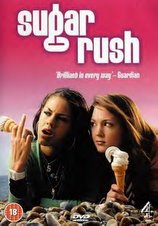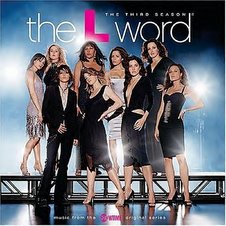Laura Mulvey
She argued that the masculine position was made subject , with the figure of the woman on screen as the object of desire. In the era of classical Hollywood cinema, viewers were encouraged to identify with the protagonist of the film, who tended to be a man. Meanwhile, Hollywood female characters of the 1950s and 60s were, according to Mulvey, coded with "to-be-looked-at-ness." Mulvey suggests that there were two distinct modes of the male gaze of this era: "voyeuristic" (i.e. seeing women as 'whores') and "fetishistic" (i.e. seeing women as 'madonnas').
Mulvey argued that the only way to annihilate the "patriarchal" Hollywood system was to radically challenge and re-shape the filmic strategies of classical Hollywood with alternative feminist methods. She called for a new feminist avant-garde filmmaking that would rupture the magic and pleasure of classical Hollywood filmmaking. She wrote, "It is said that analysing pleasure or beauty annihilates it. That is the intention of this article".
Post Modernism
A theory including many aspects of contempory society, culture, modernism, philosopy. Related to my text as Sugar Rush contains many aspects of Post Modernism such as the sexual and homo-sexual aspects of the show, as well as challenged stereotypes i.e the Father who has no control of his family, and Kims brother who dresses up like a girl in his spare time.
Sunday 30 September 2007
Thursday 13 September 2007
JeLLy'S sUmMeR rEsEaRcH.....
xX Jalna’s Summer Research on Sugar-Rush Xx
Quotations:
"There could be hundreds of millions of straight men walking around with this gay allele [variety of a gene] but who are straight simply because it didn't penetrate" Chandler Burr, "A Separate Creation" 1
"As a mother, I know that homosexuals cannot biologically reproduce children; therefore, they must recruit our children." Anita Bryant, 1977 2
"There is no scientific data that substantiates a genetic or biologic basis for same-sex attraction. Anybody can change." Richard Cohen, at the year 2000 PFOX convention, 2000-MAY-19. 3
sUmMaRy ...
Link To show views on Homosexuality... conserative/liberal view etc x
http://www.religioustolerance.org/hom_fixe.htm
Sixteen-year-old Kim is horrified when her dad tells her she's got to leave her posh private school and go to infamous Ravendene Comprehensive, 'the source and inspiration of five thousand urban myths and horror stories'. How will she survive in this wild and hormonal adolescent jungle? But then Kim meets gorgeous Maria (better known as Sugar) Sweet, queen of the 'Ravers', and falls instantly under her spell. Leaving her restrained, good-girl past far behind, Kim finds herself not only drawn into Sugar's exciting and daring life - but also asking herself a disturbing question: has she fallen deeply in love with her best friend?
Title – How have views on homosexuality changed since recent years in particular reference to ‘Sugar Rush’.
Sociological Issues –
It challenges Gender stereotypes as the father is represented as someone who is not in control of his family, and lets his wife walk all over him, rather than being the breadwinner he is supposed to be.
Gender Roles within the family
New man
Disfunctional family
Historical Issues
Past events can show how views on home-sexuality has changed over the recent years. Research shows that Homosexuality has become more acceptable, as Gay marrages have become legal. This influences how media portray homosexual behaviour, as it is shown more frequently in tv in programs such as big brother and the L Word.
Laws as to when laws wear changed for gay rights.
Theorists/Theories
Laura Mulvey
Carol Clover – Final Girl
Post Modernism – this is about a mixture of other different theorists ideas challenging one another, Sugar Rush is related to post modernism, as even though Homosexuality has been around for centuries, the idea has only become more accepted recently in society.
Who is being represented-?
Many of the characters are represented for different things, and within most of the series, most of the narratives are based around females, such as Kim, Sugar and Beth.
Kim the main protagonist. In the first series she is represented as an insecure individual, who is insecure about her homosexuality, and even tries sleeping with a boy to hide her feelings for her best friend Sugar, however this changes in series 2 as she is open about her sexuality and is in a relationship with Beth and has come clean to her family. I believe that this allows the audience to familiarize themselves with Kim as they go through her journey into become a stronger person, which also allows ‘Kim’ to become idolised.
On the other hand, Sugar is represented as a strong minded confident individual from the very beginning, however her little adventures result to her ending up in prison.
The subject of Homosexuality is represented through the character very subtle at first, however in the second series very bluntly which I believe could represent society, for example how societies attitudes have become more accepting with Gay marriages become legal and the rise in Gay clubs across the UK as apposed to before, and also rather than being frowned upon like before, is now a more ‘normal’ think, as demonstrated by gay individuals in Big Brother and other serious such as ‘L word’.
Is the representation fair and accurate?
With scenes of both Homo and hetro sexual behaviour, the show represents the idea that we are living in a fairly open and accepting society, however in reality homosexuals are still judged, not is a large extent like before.
Media Languages and Forms
Denotations/ Connotations
Leather Whips – Sexuality, Power
Lips/Eyes – Feminism, Seduction, sexuality.
The title ‘Sugar Rush’. The literal meaning is getting a high from a sugary substance, however this connotes various things. One interpretation is Kims feelings for ‘Sugar’, how she gets a pleasant feeling or an high whenever she is around her.
The importance of these is to demonstrate to audiences the main theme of Sugar Rush, Power, independence, sexuality.
Non verbal structures of meaning: During the day the main characters are dressed normally, which could represent their class (lower middle-class), which also creates a sense of normality, however on nights –outs, main characters such as Kim, Beth and Sugar dress more provocatively, which could represent them being set free, as this is the time when most of their sexual behaviour is displayed and they feel more at ease.
Props such as the Sex Shop where Beth works also relates to the theme of Exploring Sexuality.
Iconography
Mis en scene – The whole show is set it Brighton. Brighton is known for its gay scene, so it relates to why Sugar Rush is set there, however this is not representative of all on England, which indicates homosexuality is still not mainstream and is still quite a sensitive subject.
Narrative
Here are some of the narratives included:
Conflict within the main protagonist and the environment, people such as her father are still finding it hard to come to terms with Kim’s new identity as a Lesbian female.
Linear Narrative
As many of the storylines are based around Kim and Sugar, the target audience is female. Also because Kim and Sugar are young teenage characters, the target audience is also most likely to be teenagers, but around 15 + due to the sexual content and the time it is shown, after watershed. The audience category is c2/c1, working to middleclass, as it set in Brighton, a working class ideology so is targeted and the working and middleclass audience.
I believe that different characters are assigned with pacific roles.
Sugar, even though she is one of the main characters, she is presented as the adventurous one, and represents promiscuity and sexuality, however her antics get her into trouble most of the time and she is portrayed as an irresponsible individual.
Beth on the other hand is the opposite of Sugar, she is Kim’s new girlfriend and even though she is confident like Sugar, she is responsible and caring, and is in control with her actions as she works and has her own band.
The Use of these two contrasting characters are used maybe as an Binary Opposition, and a variety of different personas to make the show that bit more dramatic.
The major Themes of Sugar Rush are:
Homosexuality
Lesbianism
Love
Family
Feminism
Patriarchy
Genre
The Text I am studying belongs to a series and the genre is Drama, however I do believe it contains mixtures of other Genre’s such as comedy as it can contain humour at times.
The conventions Sugar Rush has are that it contains a lot of drama, and a mixture of different feelings. The show is face paced, has Non – Die-getic Rock music in the background which relates to the shows face paced events.
The lighting in some scenes for example when at the club, is Low Key, creating a sense of enigma for the audience, close up to facial features such as the eyes and lips add to the sexual side of things.
The show, also has commentary sound, where Kim is speaking almost like she is speaking to her diary, which allows audience to relate to her and know what is going on inside her head.
Media Institutions
The show is Shown on Channel 4, along with other Drama series related, such as Skins, (Themes included are sex, homosexuality, growing up) and Desperate housewives (Themes include sex, gender roles, feminism).
However the Story line isn’t produced by Channel 4, it is based on a novel by Julie Burchill.
Sugar Rush does fit in with Channel 4’s criteria of programmes, as it is a contemporary text and deals with modern day issues.
The Text has been distributed On Television, and is promoted Via Advertisements in the TV times, adverts on Tele and radio.
Quotations:
"There could be hundreds of millions of straight men walking around with this gay allele [variety of a gene] but who are straight simply because it didn't penetrate" Chandler Burr, "A Separate Creation" 1
"As a mother, I know that homosexuals cannot biologically reproduce children; therefore, they must recruit our children." Anita Bryant, 1977 2
"There is no scientific data that substantiates a genetic or biologic basis for same-sex attraction. Anybody can change." Richard Cohen, at the year 2000 PFOX convention, 2000-MAY-19. 3
sUmMaRy ...
Link To show views on Homosexuality... conserative/liberal view etc x
http://www.religioustolerance.org/hom_fixe.htm
Sixteen-year-old Kim is horrified when her dad tells her she's got to leave her posh private school and go to infamous Ravendene Comprehensive, 'the source and inspiration of five thousand urban myths and horror stories'. How will she survive in this wild and hormonal adolescent jungle? But then Kim meets gorgeous Maria (better known as Sugar) Sweet, queen of the 'Ravers', and falls instantly under her spell. Leaving her restrained, good-girl past far behind, Kim finds herself not only drawn into Sugar's exciting and daring life - but also asking herself a disturbing question: has she fallen deeply in love with her best friend?
Title – How have views on homosexuality changed since recent years in particular reference to ‘Sugar Rush’.
Sociological Issues –
It challenges Gender stereotypes as the father is represented as someone who is not in control of his family, and lets his wife walk all over him, rather than being the breadwinner he is supposed to be.
Gender Roles within the family
New man
Disfunctional family
Historical Issues
Past events can show how views on home-sexuality has changed over the recent years. Research shows that Homosexuality has become more acceptable, as Gay marrages have become legal. This influences how media portray homosexual behaviour, as it is shown more frequently in tv in programs such as big brother and the L Word.
Laws as to when laws wear changed for gay rights.
Theorists/Theories
Laura Mulvey
Carol Clover – Final Girl
Post Modernism – this is about a mixture of other different theorists ideas challenging one another, Sugar Rush is related to post modernism, as even though Homosexuality has been around for centuries, the idea has only become more accepted recently in society.
Who is being represented-?
Many of the characters are represented for different things, and within most of the series, most of the narratives are based around females, such as Kim, Sugar and Beth.
Kim the main protagonist. In the first series she is represented as an insecure individual, who is insecure about her homosexuality, and even tries sleeping with a boy to hide her feelings for her best friend Sugar, however this changes in series 2 as she is open about her sexuality and is in a relationship with Beth and has come clean to her family. I believe that this allows the audience to familiarize themselves with Kim as they go through her journey into become a stronger person, which also allows ‘Kim’ to become idolised.
On the other hand, Sugar is represented as a strong minded confident individual from the very beginning, however her little adventures result to her ending up in prison.
The subject of Homosexuality is represented through the character very subtle at first, however in the second series very bluntly which I believe could represent society, for example how societies attitudes have become more accepting with Gay marriages become legal and the rise in Gay clubs across the UK as apposed to before, and also rather than being frowned upon like before, is now a more ‘normal’ think, as demonstrated by gay individuals in Big Brother and other serious such as ‘L word’.
Is the representation fair and accurate?
With scenes of both Homo and hetro sexual behaviour, the show represents the idea that we are living in a fairly open and accepting society, however in reality homosexuals are still judged, not is a large extent like before.
Media Languages and Forms
Denotations/ Connotations
Leather Whips – Sexuality, Power
Lips/Eyes – Feminism, Seduction, sexuality.
The title ‘Sugar Rush’. The literal meaning is getting a high from a sugary substance, however this connotes various things. One interpretation is Kims feelings for ‘Sugar’, how she gets a pleasant feeling or an high whenever she is around her.
The importance of these is to demonstrate to audiences the main theme of Sugar Rush, Power, independence, sexuality.
Non verbal structures of meaning: During the day the main characters are dressed normally, which could represent their class (lower middle-class), which also creates a sense of normality, however on nights –outs, main characters such as Kim, Beth and Sugar dress more provocatively, which could represent them being set free, as this is the time when most of their sexual behaviour is displayed and they feel more at ease.
Props such as the Sex Shop where Beth works also relates to the theme of Exploring Sexuality.
Iconography
Mis en scene – The whole show is set it Brighton. Brighton is known for its gay scene, so it relates to why Sugar Rush is set there, however this is not representative of all on England, which indicates homosexuality is still not mainstream and is still quite a sensitive subject.
Narrative
Here are some of the narratives included:
Conflict within the main protagonist and the environment, people such as her father are still finding it hard to come to terms with Kim’s new identity as a Lesbian female.
Linear Narrative
As many of the storylines are based around Kim and Sugar, the target audience is female. Also because Kim and Sugar are young teenage characters, the target audience is also most likely to be teenagers, but around 15 + due to the sexual content and the time it is shown, after watershed. The audience category is c2/c1, working to middleclass, as it set in Brighton, a working class ideology so is targeted and the working and middleclass audience.
I believe that different characters are assigned with pacific roles.
Sugar, even though she is one of the main characters, she is presented as the adventurous one, and represents promiscuity and sexuality, however her antics get her into trouble most of the time and she is portrayed as an irresponsible individual.
Beth on the other hand is the opposite of Sugar, she is Kim’s new girlfriend and even though she is confident like Sugar, she is responsible and caring, and is in control with her actions as she works and has her own band.
The Use of these two contrasting characters are used maybe as an Binary Opposition, and a variety of different personas to make the show that bit more dramatic.
The major Themes of Sugar Rush are:
Homosexuality
Lesbianism
Love
Family
Feminism
Patriarchy
Genre
The Text I am studying belongs to a series and the genre is Drama, however I do believe it contains mixtures of other Genre’s such as comedy as it can contain humour at times.
The conventions Sugar Rush has are that it contains a lot of drama, and a mixture of different feelings. The show is face paced, has Non – Die-getic Rock music in the background which relates to the shows face paced events.
The lighting in some scenes for example when at the club, is Low Key, creating a sense of enigma for the audience, close up to facial features such as the eyes and lips add to the sexual side of things.
The show, also has commentary sound, where Kim is speaking almost like she is speaking to her diary, which allows audience to relate to her and know what is going on inside her head.
Media Institutions
The show is Shown on Channel 4, along with other Drama series related, such as Skins, (Themes included are sex, homosexuality, growing up) and Desperate housewives (Themes include sex, gender roles, feminism).
However the Story line isn’t produced by Channel 4, it is based on a novel by Julie Burchill.
Sugar Rush does fit in with Channel 4’s criteria of programmes, as it is a contemporary text and deals with modern day issues.
The Text has been distributed On Television, and is promoted Via Advertisements in the TV times, adverts on Tele and radio.
Subscribe to:
Posts (Atom)




